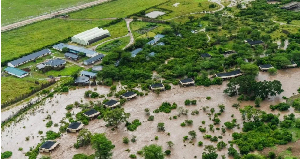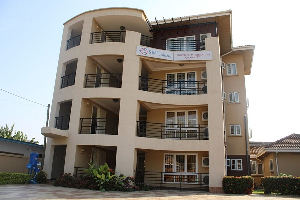Regional News of Wednesday, 13 June 2012
Source: GNA
Upper East Region takes up fight against desertification
Thirteen groups and beneficiary communities of the Ghana Environmental Management Project (GEMP) in the Upper East Region are planting trees, rearing guinea fowls, livestock and processing shea butter and dawadawa.
The groups and communities are being supported by the first phase of the GEMP project at a cost of GH¢229,000.
The project aims at increasing the capacity of Ghanaian institutions and rural communities to plan and manage initiatives addressing desertification problems in the region.
The sub projects started with various groups and individuals including the Balungu and Yameriga fuel wood lots projects and Datuku Circuit Environmental Club, tasked to afforest a four acre land.
The others are Guinea fowl production at Nangodi, Sustainable Integrated Bee Keeping at Nakong, Tree Nursery and Woodlots Management in Bolgatanga Secondary School, Sherigu-Kumblingo fuel Woodlots Project and Sustainable Land Management and Tree Growing and Livestock Production at Zuarungu.
It also includes Tree Planting Project at Zaare, Afforestation Project in Navrongo Secondary School, Woodlot Management at Garu-Tempane, Guinea Fowl rearing at Tilli and Yikurugu at Bawku West District.
Members of the Regional Environmental Management Committee (REMC) embarked on monitoring visits to the 13 sub- projects to measure the progress of work and interact with the beneficiaries to discuss their activities as well as challenges.
At the Balungu and Yameriga fuel wood lot projects near Bolgatanga, the Women groups were nursing different species of trees including cassia, Eucalyptus, cashew, local mango, kapok, Mahogany and pawpaw.
The groups are also beneficiaries of installed shea butter processing machine.
The fuel woodlots project at Sherigu-Kumlingo had a bore hole, 4,800 cassia seedlings, 1000 leucenea and 600 albizia tree species.
There were also grafted cashew and mango seedlings, and guinea fowls, whilst the Afforestation project at Navrongo Secondary School had its three hectare plot fenced and ploughed, awaiting seedlings for transplanting.
All the projects were at various stages of activity but the general complaint was the fear of bush fire during the dry season.
Members of REMC advised the project managers to ensure that they make wild fire belts to protect the trees.
They suggested to the Environmental Protection Agency (EPA) to link the plantation developers with those at the tree nurseries to ensure regular supply of seedlings.
The Members, who reviewed some proposals for more projects in the second phase, were of the view that individuals should not be given such support as it would only benefit them and their families and not the community.
Mr. Frank Alormene, Principal Programme Officer, EPA, explained that the GEMP project covered the Northern, Upper East and Upper West regions.
It had a goal to strengthen Ghanaian institutions and rural communities to enable them to reverse land degradation and desertification trends in the area, and to adopt sustainable water and land management systems that would improve food security and reduce poverty.**










